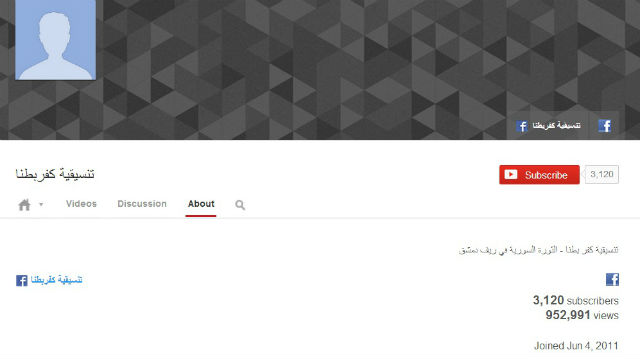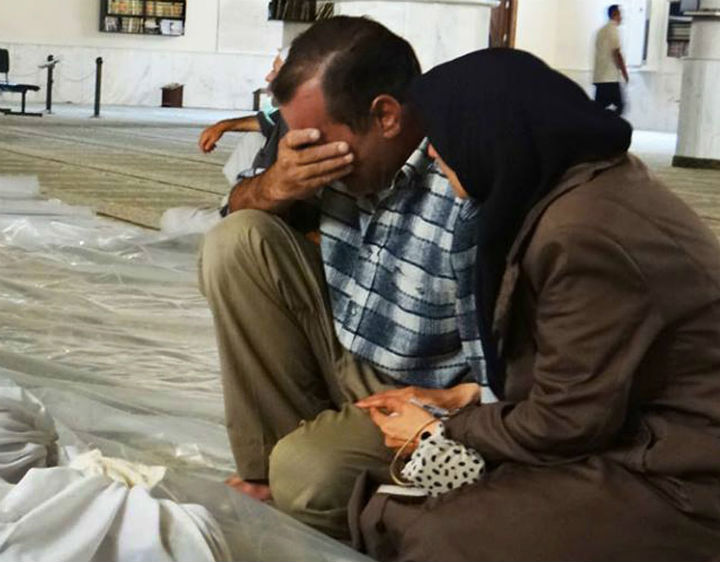Warning: This story contains graphic details and images that may be disturbing to some people.

VANCOUVER – Reports of a major chemical weapons attack in the suburbs of Damascus have prompted the United Nations Security Council to hold an emergency meeting.
The world body already has a 20-member inspection team in Syria, which arrived three days ago, to investigate claims of chemical weapons use.
The U.S., Britain and France are calling on the UN to direct the team to investigate the reports Syrian civilians were gassed.
Syrian opposition activists claim hundreds were killed in the attack, with some reports putting the death toll above 1,300.
Many of the details of the attack, in the area of Eastern Ghouta, have been coming from firsthand sources who have posted video online.
Officials and international news agencies have been trying to gather the most up-to-date and accurate information coming from people who may have witnessed the alleged attack and captured the aftermath on camera.
Videos circulating on YouTube show horrific scenes in a hospital, of doctors treating dozens of patients, children being doused with water and men convulsing and spitting up white foam.
And then there are the images of the hospital corridors, with bodies, young and old, lined up on the floor along the walls.
The videos are hard to watch and also hard to confirm as real.
It can be tricky to verify videos and images, but in order to get the story right it takes making the time.
That’s where services such as Storyful and NewsPoint come in.
Both make it their job to comb through social media posts, and they’ve been in the business of verifying for about as long as the Syrian conflict has been going on.
Journalist Félim McMahon of Storyful, in operation out of Ireland since 2011, said there is now a “well-developed network of opposition news sources.”
“Every town, every village has… a handful of media activists who are reporting on a daily basis and filming on a daily basis,” McMahon said in a phone interview.
The team at Storyful goes straight to the source, of the video or image, and starts working backward to find out who posted it, where it was posted and how an event unfolded.
He noted the majority of the video uploads coming out of the conflict are from people opposed to the Syrian regime.
Because Storyful has been working on sourcing footage out of Syria for the past couple of years, they’re somewhat familiar with the lay of the land without having set foot on the ground.
First of all, Storyful’s journalists look at the uploader’s history: how long have they been online, how many videos have they uploaded, are they the original source of the video.
They also “geo-locate” the scene, using tool such as satellite imagery, Google Earth and Google Maps and use landmarks to locate where violence or armed attacks have occurred.

“It could be a mosque. It could be a building. It could even be the shape of road… There will be visual information in that video that you’ll be able to match,” he said.
McMahon said you’re often you’re looking at scenes, such as an explosion or daytime attack, and it’s possible to pinpoint a specific area — with “100 per cent certainty, in many cases” — at which time they distribute the verified footage to their subscribers.
Sometimes it takes mere minutes, but other times it can be a rigorous process to get to the point where they’re comfortable to publish the footage.
“Today, with the reports coming out of East Ghouta, it was quite confusing because the casualties had been brought to five separate locations,” McMahon explained. “So, what we did was go to the earliest local sources and did a chronology of what happened.”
He said the area consists of about a dozen towns and villages, which all have “highly developed local networks” that regularly post videos on YouTube and Facebook – some on an hourly basis.
“Most of the uploaders we dealt with today – in fact the vast majority of them — are uploaders that have been on our system over the past two years,” McMahon said.

Because not all of the details could be verified 100 per cent, Storyful presented all of the information it was able to gather and the noted its history with the uploaders posting the video, to back up the credibility of the posts.
“All of the content featured by Storyful comes from uploaders associated with the areas affected, and the areas were victims were treated,” McMahon wrote on the Storyful website.

In a situation such as Wednesday’s reported chemical attack, medical expertise certainly plays a role in confirming the details.
Chemical weapons expert Stephen Johnson said the footage seen on Wednesday is, for the most part, consistent with other videos of alleged chemical weapons attacks in Syria during the past year.
“There is a large number of people demonstrating the shaking of limbs, dilation of pupils in some cases, which would be consistent with some kind of trauma to the nervous system,” said Johnson, a visiting fellow at Britain’s Cranfield Forensics Institute.
But, not everything in the videos he has seen matches up with what you would expect to see in footage of a chemical attack.
He points to the colour of the foam people are seen spitting up. He said it’s “too white, too pure,” when it would generally be yellow or bloodier. He also noted it did not appear that everyone in the footage exhibited the same symptoms.
He noted the footage of people collecting hair and blood samples, in an attempt to gather evidence of attack. But, he said the UN would only accept forensic evidence gathered by its own investigators looking into the possibility of a chemical attack.
Stephen Johnson, a visiting fellow at Cranfield Forensics Institute, analysed a number of amateur videos that emerged online following the alleged attack. Warning: Graphic Images.
Video verification not only helps ensure accurate reporting of the 2.5-year civil war, it helps keep Syria at the front of people’s minds when they’re far-removed from what’s going on.
“If something has happened anywhere in Syria it’s almost guaranteed that there will be a video somewhere,” said Katy Durrans of NewsPoint — a service started by the citizen journalism organization Blottr in 2010.
But, she said hearing or seeing the word “unverified video” in a news report casts doubt in the viewer audience, which is why measures need to be taken to confirm the locations and sources of footage posted to the web.
She said the only country that even compares to Syria, in regards to the amount of reliable user-generated coverage, is Bahrain.
“But, it’s nowhere near the same scale,” she said.
Despite the vast amount of footage, Syria doesn’t always make the top of the headlines.
“Syria has always been on the top of our agenda,” she said in a phone interview from London. “It’s not just the big massacres that need coverage.”




Comments